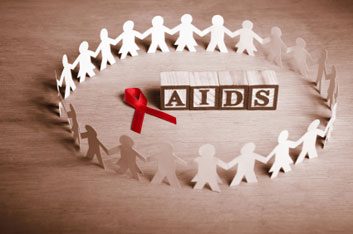Guest post: Why we should still care about HIV/AIDS
Zoe Cormier is a freelance journalist specializing in science writing and a frequent contributor to Besthealthmag.ca. On this 22nd World

Zoe Cormier is a freelance journalist specializing in science writing and a frequent contributor to Besthealthmag.ca. On this 22nd World AIDS Day, Zoe explains why we shouldn’t be apathetic about this disease.
We’ve seen some exciting advancements recently in the global fight against HIV/AIDS and the search for a cure. But as exciting as these developments are, we can’t yet put our worries about this virus to rest.
But first, the good news: On Nov. 23, the UNAIDS agency said that the global AIDS epidemic has slowed by 20 per cent over the past decade. ‘We can say with confidence and conviction that we have broken the trajectory of the AIDS pandemic,’ declared UNAIDS executive director Michel Sidibe in Geneva to a large press conference, with great fanfare.
Two days later, another huge announcement came: a new study, also funded by the UN, found for the first time that a drug in a pill form can provide some protection against contracting HIV’though in this case, the drug was only tested on gay and bisexual men (further studies would need to show if the pill could protect heterosexual women, for whom the mode of transmission is different). Men taking Truvada’a pill containing the antiretroviral drugs tenofovir and emtricitabine’had a 44 per cent lower rate of contracting the virus (and that rose to 70 per cent in the men who took it with the most diligence).
This comes on the heels of another study, released in July 2010, which showed that women using vaginal gels containing tenofovir had a 39 percent reduced risk of contracting the virus.
Perhaps even more exciting: last year a study from Thailand demonstrated that a trial vaccine was 31 percent effective against the virus.
But we need to temper our optimism. The AIDS epidemic is far from over: according to the UN, 33 million people are living with HIV, almost three million people a year are diagnosed with HIV, there are 7,000 new infections every day, and for every one HIV-positive person starting treatment, another two are newly infected.
A vaccine, though possible, is still a long way off’ 30 percent protection is far below what is needed (would you take a flu shot that only gave you a third less risk?).
The Truvada pills may have greater efficacy, but a pill is hardly cut from the same cloth as a vaccine in that it is not permanent. While a shot can be taken once, drugs need to be taken continually. And Truvada doesn’t come cheap: in the US it would cost around $1,000 a month (though cheap generic versions are available for 40 cents a dose, but those are likely only for dispensing to high-risk and vulnerable populations in developing countries, especially women in sub-Saharan Africa).
Even more worrying, say AIDS researchers, is the rise of what they call ‘prevention fatigue’: simply put, people have grown weary of the warnings and the advice to wear condoms, and so many people aren’t taking the precautions they once did. With fewer media attention focused on HIV in the developed world, young people in Canada and elsewhere widely seem to think of the virus as the pandemic of a bygone era.
And it is not only the young who are taking fewer precautions: middle-aged people are also showing great signs of prevention fatigue. In the UK for example, HIV infection rates in people over 50 have more than doubled in seven years, growing at a much faster rate than in the young.
There is certainly reason to have hope: we have made huge advancements. We could develop a truly protective drug, or even a vaccine. And diagnosis today is not the death sentence it once was.
But the epidemic is far from over. Protection in the form of the humble condom is still our best defence.
– By Zoe Cormier
Related:
‘ 11 things every Canadian should know about HIV/AIDS
‘ Sexually Transmitted Diseases (STDs)
‘ Canada’s best medical care for women




